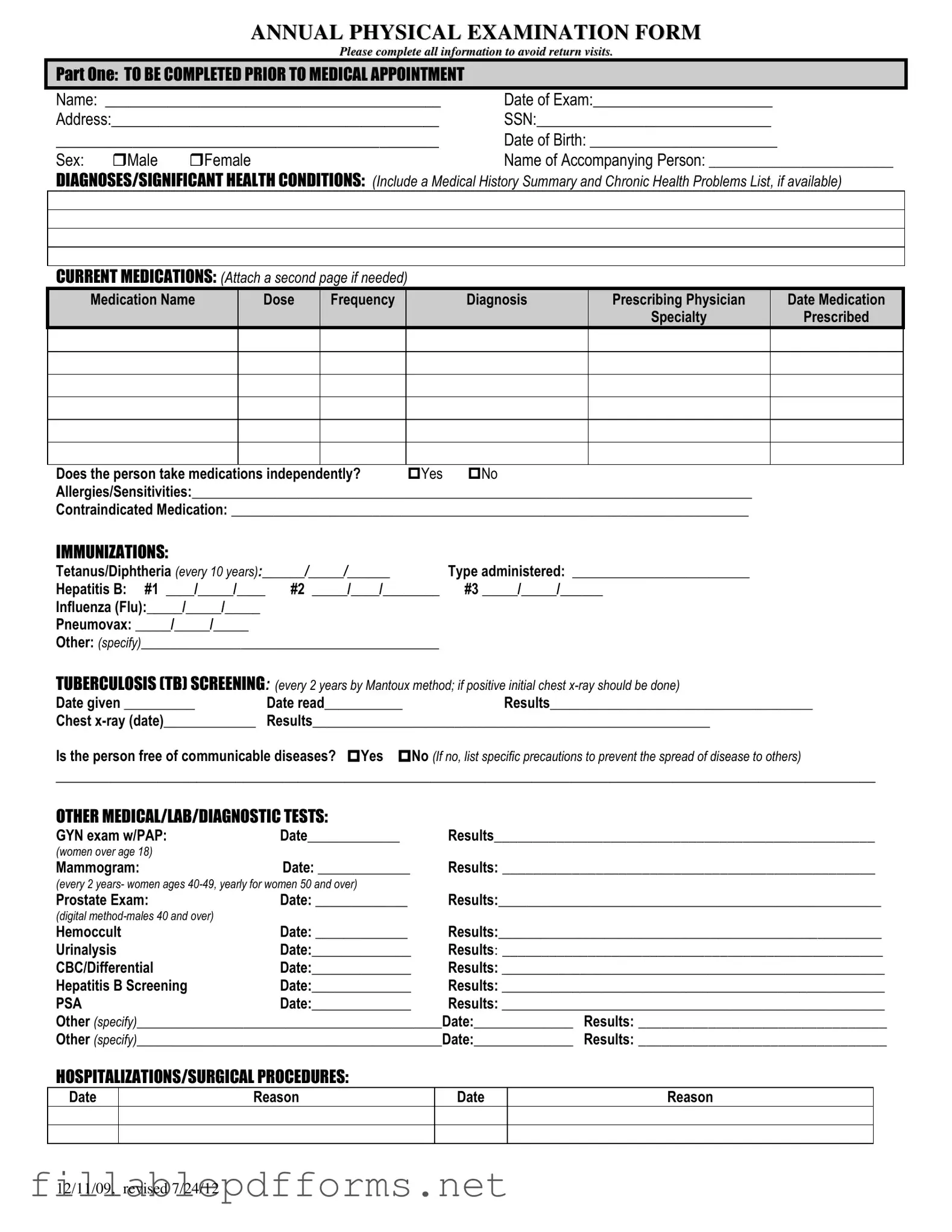The Annual Physical Examination form is an important document that helps healthcare providers gather essential information about a patient’s health. This form is divided into two main parts. The first part is to be completed before the medical appointment and includes personal details such as the patient's name, date of birth, and contact information. It also requires a summary of medical history, current medications, allergies, and immunization records. Patients must list any significant health conditions and provide details about past hospitalizations or surgeries. The second part of the form focuses on the general physical examination. It includes vital signs like blood pressure and pulse, as well as an evaluation of various body systems, such as cardiovascular and respiratory health. Patients can also indicate if they have undergone specific screenings, such as vision or hearing tests. Additional comments and recommendations for health maintenance are included to ensure that patients receive appropriate care and guidance. Completing this form accurately helps minimize the need for return visits and enhances the quality of healthcare provided.
